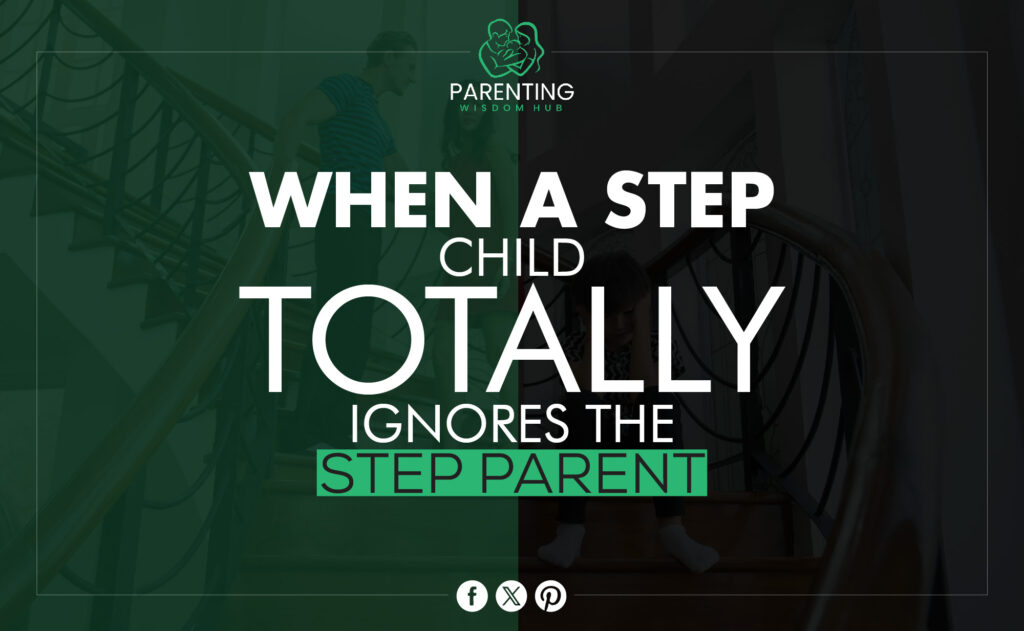Introduction
Balancing mixed family dynamics is challenging. When a stepchild ignores a stepparent, it can be difficult for many stepparents, not alone. Numerous families encounter similar challenges, but there are ways to improve domestic harmony. This blog article will explain this behavior and provide ways to strengthen your stepchild connection.
What are the dynamics of stepparenting?
There are many great things about being a stepparent; unique problems arise. The first step to having a good relationship with your stepchild is understanding how things work. The child’s attachment to their biological parent, adjustment to the new family structure, and mental turmoil over previous family upheavals are frequently the causes of stepparenting’s challenges.
Emotional Adjustments
Children of all ages experience significant changes in how they feel when their families merge. They might not know how to love their original parent and new stepparent simultaneously, and with this mental tug-of-war, people may ignore things.
Loyalty Conflicts
When kids think getting close to a parent is betraying their original parent, they have loyalty issues. This is especially common if the original parent has said they don’t like the new family arrangement. Handling these trust issues carefully is essential so the child doesn’t feel worse.
Role Confusion
Kids in blended homes often don’t know their jobs, which can be confusing. The child may not know how to talk to or connect with the stepparents, and they may choose to avoid them as an easy option. Over time, this misunderstanding can be cleared by being transparent about jobs and standards.
The Effects of a Stepchild Ignoring You
It can be very upsetting and mentally tiring when a stepchild totally ignores you. On the other hand, understanding the possible reasons for this behavior can help you deal with it better.
Emotional Toll on Step Parents
It is impossible to overstate how much it affects stepparents. Some frequent emotions are rejection, anger, and powerlessness. It’s important to acknowledge these thoughts, but it’s also important to be gentle and understanding.
The strain on Family Relationships
Ignoring behavior can stress the whole family. It makes people tense and uncomfortable, making it hard for everyone to get along and enjoy their time together. Dealing with the problem directly can help ease this stress and improve the family relationship.
Potential for Escalation
If ignored, habits can lead to serious family problems. To prevent this, stepping in early and trying to build friendships is essential.
Strategies for Building a Connection
Connecting with a stepchild who doesn’t talk to you takes time, understanding, and planning. Here are some valuable tips that will help you build a good friendship.
Be Patient and Understanding
Always remember that getting to know someone takes time and work. Don’t give up if your stepchild doesn’t want to talk to you after several tries. Keep being understanding and gentle, but also make sure they know what you expect from them.
Communicate Effectively
When you have a stepchild who might not believe you, it’s essential to talk to them openly. Try to actively listen, show that you are interested in what they have to say, and acknowledge how they feel. This will help them understand and feel heard.
Find Common Ground
Finding things or activities that you both enjoy is an effective way to connect with a stepchild. This can be a great way to break the ice, start a talk, and get to know each other better.
Seek Support
Being a stepparent is challenging, so don’t be afraid to ask other stepparents for help. As you deal with your complicated connection with your stepchild, they can give you good help, care, and understanding.
Establish Trust Gradually
Trust is vital in all relationships but critical in mixed families. You can show your stepchild that you can be trusted by taking small, regular steps. Since actions speak louder than words, demonstrating your commitment by acting lovingly and consistently can have a significant effect.
Respect Their Space and Boundaries
It’s essential to build trust by giving your stepchild room and limits. When you try to be a parent or force someone to connect with you, it can go wrong. Instead, let the connection grow independently and give them the needed time and room.
Engage in Shared Activities
Activities you enjoy can help break the ice and unite people. If you and your partner share a skill or a favorite sport or want to spend time together, these are great ways to get closer without any stress.
Encouraging Open Communication
Talking openly with your stepchild will clear any confusion and build a good bond.
Create a Safe Environment
Ensuring your stepchild feels safe enough to talk about their feelings is crucial. Encourage people to talk to each other and listen without judging or offering answers right away.
Use Positive Reinforcement
Positive feedback can help people talk to each other more openly and keep doing what you want them to do. When your stepchild opens up and talks, praise them and let them know you understand how they feel.
Addressing Concerns Calmly
Keep your cool when dealing with problems or disagreements. Avoid getting angry or defensive, as these actions can make things worse. Instead, try to find answers that everyone can agree on.
Strengthening Family Bonds
Making the family stronger can help your relationship with your stepchild in a roundabout way.
Family Activities and Traditions
Participate in family events and create new customs that everyone can enjoy. Sharing these events can help your stepchild feel like part of the family and give them a sense of unity.
Encourage Sibling Relationships
Encouraging good ties between brothers, blood, and steps can help create a helpful family setting. Having close ties with your siblings can help you accept others and feel less alone.
Family Meetings
Family talks regularly allow everyone to say what they think and feel. These meetings can help people talk to each other and work together to solve problems.
Seeking Professional Support
Even if you try your best, you may need professional help to overcome greater problems.
Family Therapy
Family therapy can be a safe place to discuss deep-seated problems and improve connection. A therapist can give you and your family valuable insights and techniques tailored to how your family works.
Individual Counseling
Counseling for both the stepchildren can help them deal with their mental problems. It gives you a safe place to think about yourself and grow.
Support Groups
Participating in support groups for stepparents can give one a feeling of community and similar experiences. Learning from people who have been through similar problems can give one new ideas and ways to deal with them.
Building Resilience as a Step Parent
To handle the ups and downs of stepparenting, you need to build perseverance.
Self-Care Practices
Take care of yourself first to keep your mental health in good shape. Do things that make you happy, calm down, and ask your friends and family for help.
Patience and Persistence
To get along with your stepchild, you must be patient and persistent. Know that success may be slow at first, but that if you keep at it, you will finally see results.
Keeping Perspective
Look at the bigger picture to keep things in perspective. Remember that it takes time to build a mixed family and that every little step forward is a win.
Celebrating Small Wins
Celebrating small wins can make people feel better and encourage them to do good things.
Acknowledge Progress
Any gain, no matter how small, should be recognized and praised. These good things can motivate you and your stepchild to keep building your bond.
Share Joyful Moments
Enjoy happy times together and make memories that will last a lifetime. These good times can strengthen your relationship and help you build trust and love.
Reflect on Growth
There is good news in your bond with your stepchild. Take some time to think about how you have grown as a stepparent. These accomplishments can inspire you and give you hope for the future.
Conclusion
It’s challenging, but not impossible, to receive neglect from a stepchild. You can create a meaningful and enduring connection with your stepchild by understanding the dynamics, using practical tactics, and being patient and empathetic.
Remember that every family is different, and development may be gradual, but with love and patience, you can form a peaceful, blended family. Professional help and networking with other teachers might provide further assistance. We can foster love and care for our mixed families.


